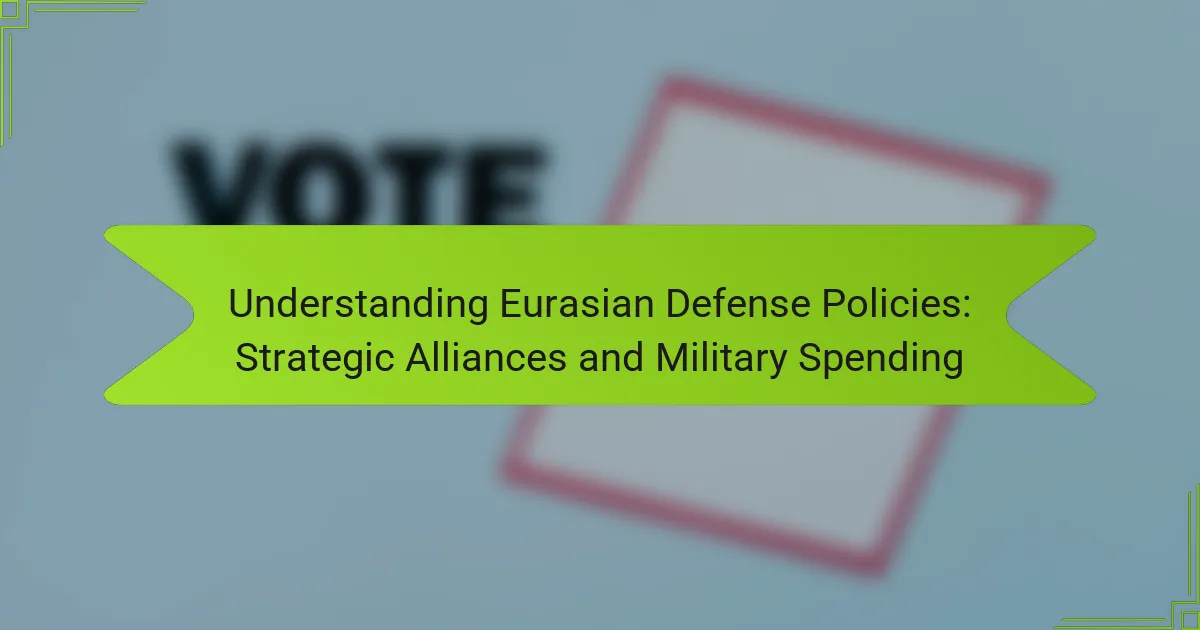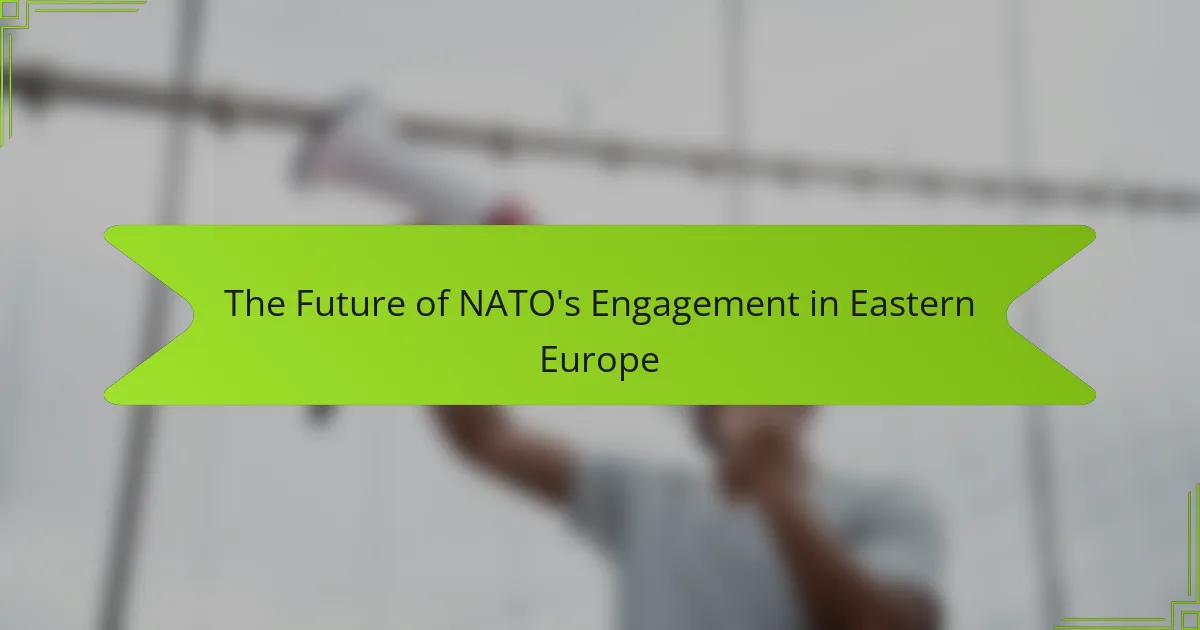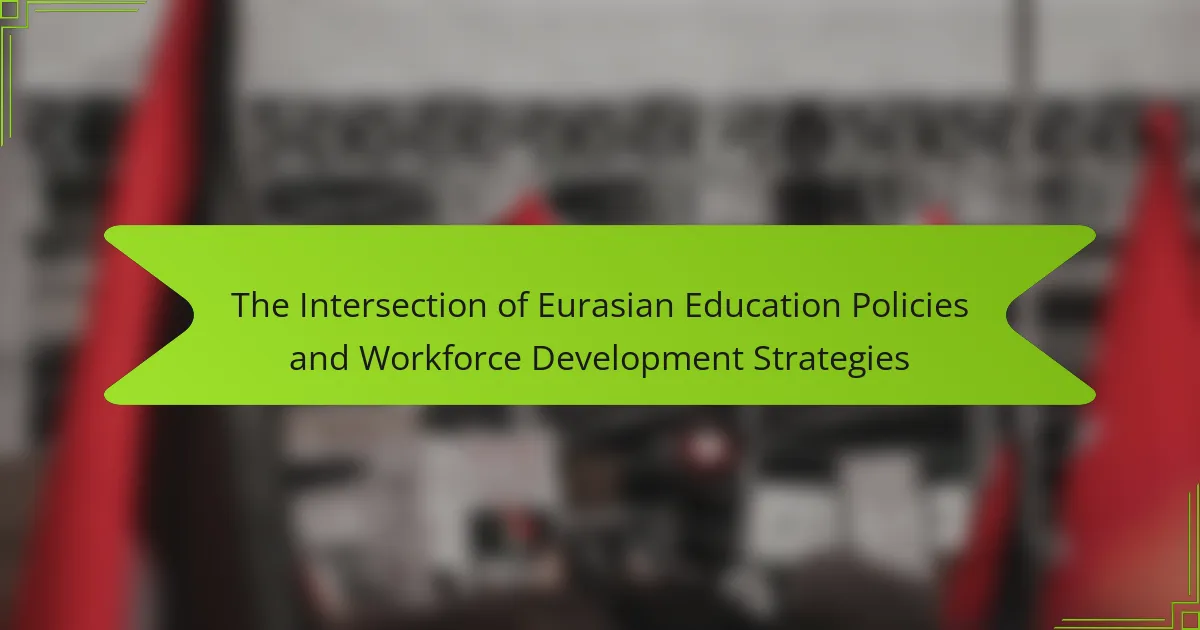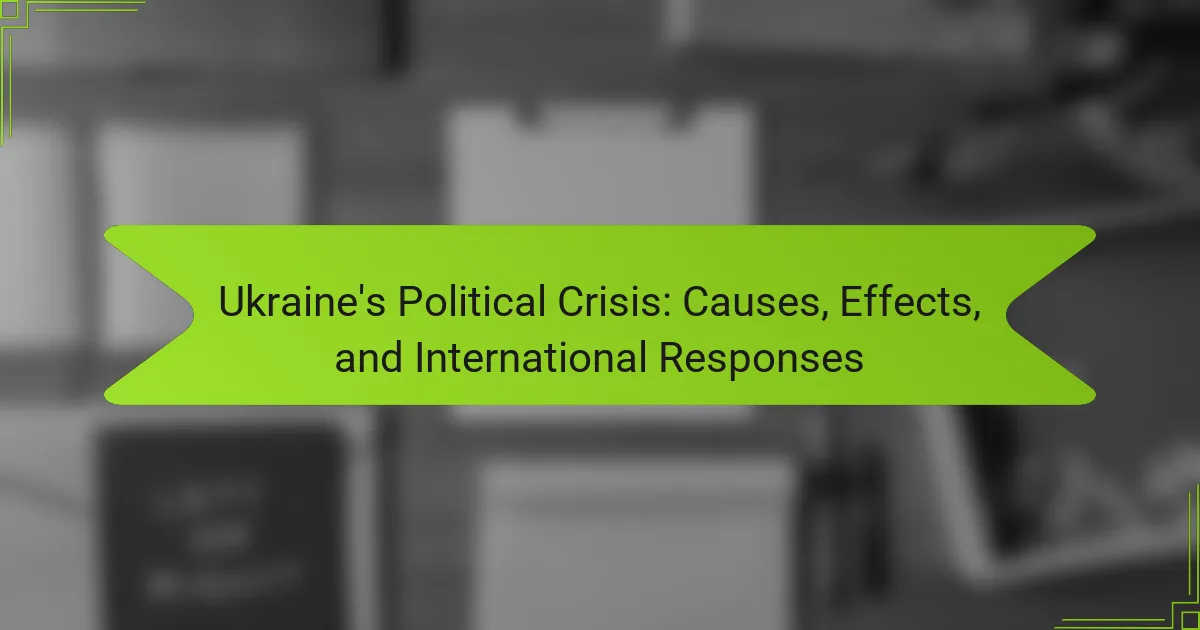Ukraine’s political crisis is characterized by a complex interplay of corruption, historical ties to Russia, and ethnic divisions, which have led to widespread dissatisfaction and unrest. The 2014 Euromaidan protests marked a significant turning point, highlighting the deep-seated issues within governance and public trust. The ongoing conflict has resulted in severe economic decline, soaring inflation, […]

Understanding Eurasian Defense Policies: Strategic Alliances and Military Spending
Eurasian defense policies encompass strategic alliances, military spending, and regional security cooperation, with the Collective Security Treaty Organization (CSTO) exemplifying key partnerships. Significant disparities in military spending exist among Eurasian nations, particularly with Russia’s focus on modernization. The landscape is shaped by common security threats, including terrorism and border security, while challenges such as geopolitical […]

The Future of Eurasian Technology Policies: Innovation Incentives and Regulation Challenges
The article examines the evolving landscape of technology policies in Eurasia, focusing on key elements such as innovation promotion, regulatory frameworks, and international collaboration. It highlights the importance of enhancing research and development capabilities while ensuring compliance with data protection and cybersecurity standards. The analysis includes the role of stricter regulations and incentives for innovation, […]

The Future of NATO’s Engagement in Eastern Europe
NATO, the North Atlantic Treaty Organization, is actively engaged in Eastern Europe to enhance defense and deterrence capabilities against regional security challenges, particularly those posed by Russia. This engagement involves the deployment of multinational battlegroups in Poland and the Baltic states, as well as conducting regular military exercises to improve readiness and interoperability among member […]

The Intersection of Eurasian Education Policies and Workforce Development Strategies
The article examines the intersection of Eurasian education policies and workforce development strategies, focusing on key components such as alignment with labor market needs, investment in vocational education, and the promotion of lifelong learning. It highlights how various countries in the region, including Finland, Kazakhstan, Russia, and Azerbaijan, implement tailored approaches to enhance employability and […]

The Influence of Social Media on Political Mobilization in Eurasia: Trends, Case Studies, and Impact on Elections
Social media is a pivotal entity in the context of political mobilization in Eurasia, significantly impacting how activists and the public communicate. Platforms such as Facebook and Twitter enable the swift dissemination of information, facilitating the organization of protests and political movements, particularly in countries like Russia and Belarus. The article examines the role of […]

Russia’s Foreign Policy in the Caucasus: Strategies and Regional Implications
Russia’s foreign policy in the Caucasus centers on security, influence, and energy resources, with a primary focus on maintaining regional stability. The strategy involves preventing conflicts that threaten Russia’s borders and asserting dominance over former Soviet states. Key components include military presence to deter external influences, economic cooperation to strengthen ties, and leveraging energy supplies […]

Eurasian Government Policies: Overview of Economic Reforms and Their Impact on Trade Relations
Eurasian government policies encompass the regulatory frameworks and strategies adopted by countries in the Eurasian region, aimed at fostering economic cooperation and integration. A prominent example is the Eurasian Economic Union (EAEU), established in 2015, which includes member states such as Russia, Kazakhstan, and Belarus, and facilitates the free movement of goods, services, and labor. […]

Analyzing Eurasian Government Policies: Social Welfare Initiatives and Their Outcomes
Eurasian government policies on social welfare initiatives focus on key areas such as poverty alleviation, healthcare access, and education support, aiming to enhance citizens’ quality of life across the region. Specific programs include financial assistance and job creation in poverty alleviation, universal health coverage in healthcare access, and funding for educational institutions. The effectiveness of […]

Understanding China’s Influence in Central Asia: Economic Strategies and Political Alliances
China’s influence in Central Asia is characterized by significant economic investments and strategic political partnerships. Central to this influence is the Belt and Road Initiative (BRI), which has seen over $60 billion invested in infrastructure projects such as roads, railways, and energy pipelines since 2013. This economic engagement has led to a robust trade relationship, […]
